L.A. Sartor's Blog, page 20
September 16, 2018
Geoff Symon's Forensics For Fiction Flubs – Circumstantial Evidence

I'm so excited to have uber amazing Geoff Symon as a guest. I attended several of his workshops at #RW2018 and found him vastly entertaining while giving us serious information. Please welcome Geoff.
Forensics For Fiction Flubs – Circumstantial Evidence
Thanks, L.A., it's a pleasure to be here today.
One of the most frequently misused terms from the investigative community by writers of entertainment is "Circumstantial Evidence.” Quotes like “it’s circumstantial at best,” “you brought me in here for this circumstantial case? My client will walk!” and “All you have is circumstantial evidence! You got nothin’!” express a belief that circumstantial evidence is weak, inapplicable and useless in a case. The truth is it’s the exact opposite.
Circumstantial evidence is just that – Evidence, and therefore by definition, it works to prove or disprove an allegation.There are two main categories of evidence: Direct and Circumstantial. Direct evidence is an unquestionable statement of fact. It is evidence that requires no interpretation because the evidence itself (the statement) tells the story. Legally, what that boils down to is an eyewitness account of the crime. In the digital age, this can also mean a video recording of the crime.
So, when a witness testifies that she saw the suspect shoot the victim with a gun, there is no inference that needs to be made. The suspect shot her. The only thing a defense team can do is try to discredit the testimony as an outright lie or misinterpretation. But, there is no wiggle room as far as what the account tells. To be clear, not all eyewitness accounts are counted as direct evidence. The description must be a first-hand account of the crime itself. If this witness saw the suspect in the vicinity of the shooting at the approximate time it occurred, that would fall into the circumstantial category.
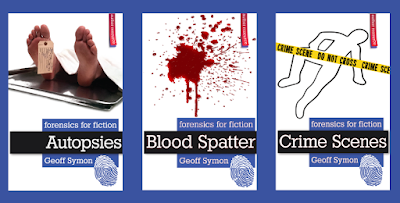
Circumstantial evidence, then, is everything else that is not an eyewitness/video account. Officially, it is evidence that requires some level of inference.
For instance, in the example above where the witness simply saw the suspect in the area, this requires us to take extra steps in our minds to put the gun in his hand in order to conclude he shot the victim. Seems pretty flimsy as far as evidence goes, doesn’t it? Except there’s so much more included in this category. Fingerprints, footprints, murder weapons and, yes, even DNA are all considered circumstantial evidence. They all require you to create the story in your mind to put it all together, unlike direct eyewitness testimony that tells the story for you. But, I think we can all agree that a case that has fingerprints, DNA, and possession of the murder weapon is a VERY strong case. And yet, it’s merely a circumstantial case.
Many argue that direct evidence is stronger than circumstantial evidence, but the concession must be made that circumstantial evidence can be extremely powerful on its own. The reality of the world we live in is the vast majority of crimes don’t have an eyewitness or a video capture. So if circumstantial evidence was deemed to be ‘useless’ then hardly any wrongdoing would be solved. The U.S. legal system accommodates this by having a “Burden of Proof” requirement. In layman’s terms this simply establishes how much circumstantial evidence is needed for us all to agree this suspect is guilty. There are different levels of the Burdens of Proof, depending on the severity of the infraction.
For example, in civil cases the Burden of Proof is a Preponderance of the Evidence, which means, does the evidence show the suspect is more likely guilty than not? It’s a 50% rule. If the evidence can make the judge feel 51% certain the suspect did it, he’s guilty. In criminal cases, however, the Burden of Proof becomes much greater. It’s no longer the “most likely” standard, but instead rises to Beyond a Reasonable Doubt. This means that an average person would have no doubt that the suspect is guilty. If there is a legitimate doubt whether the suspect did the crime, then he cannot be found guilty. This is much more difficult to prove than a Preponderance of the Evidence case.

Using the Beyond a Reasonable Doubt standard in a circumstantial evidence case, if the only proof the prosecution had was the suspect was seen arguing with the victim earlier in the day, would not be enough to erase the doubt that he was involved in the shooting.
People have arguments all the time - that does not mean they shoot each other. Likewise, not all shootings are because the two argued earlier that day. But when you start adding other circumstantial evidence so that not only were they seen arguing early in the day, but gas receipts show his car was out at 3AM (around the time of the shooting), his footprints were found outside her window and his fingerprints were found on the gun, you now have a very strong case against this suspect. Each of these pieces of the evidence, however, is still only circumstantial evidence. All of it works together to make a case just as strong as any direct evidence investigation.
So be careful using dialogue like, “it’s just a circumstantial case” in your books, because circumstantial evidence is what often brings the bad guys to justice.
Bio:Geoff Symon is a 25-year federal forensic investigator, teacher, and consultant. For the past several years, he has shared his expertise by teaching authors about real-life forensics through lectures, online courses, and his Forensics for Fiction series of books.
Find Geoff:Website | Forensics For fiction | Twitter
Find Geoff's Books: [image error]
 [image error]
[image error]
 [image error]
[image error]

Tweet
Published on September 16, 2018 23:30
September 13, 2018
Scrivener ~ My Choice For Writing Software

Today I formally introduce my partnership with Scrivener. I've been using this program on Window for years, and while I've been a partner of Scrivener for some time, it's time to blow Scrivener's horn.

Grow Your Manuscript Your Way
At Scrivener’s heart is a simple but powerful ring-binder metaphor that allows you to write, research and arrange long documents by breaking them into smaller sections. Each section is integrated into a project outline, meaning that you can step back and work with an overview, and restructuring is as easy as drag and drop. Your research is always within reach, because Scrivener allows you to import almost any kind of file and view it right alongside whatever you’re writing. Scrivener is fundamentally about getting words onto the page, though, so its familiar editor and formatting features ensure that writers feel right at home.
And when you’re ready to share your work, you can export to Word or create beautiful-looking ebooks and PDF files.
This is exactly the reason I use this program. Everything I need is in one place. And I can add templates, thus I can design Scrivener to meet my needs.
About ScrivenerTailor-made for long writing projects, Scrivener provides everything need to craft your first draft. Used by best-selling novelists, screenwriters, lawyers, students, journalists and more, Scrivener brings together tools familiar to writers everywhere in new and exciting ways.
Note, they said screenwriters. Yes, you can properly format your screenplay in Scrivener.
And there is an iOS app available so you can write on your iPad or iPhone! Which I do, AND I can also write on my notebook or PC, I use Dropbox to host my files and save/sync each time I'm done so I can use whichever computer, iOS device works for me.
⭐For Mac users, there is a new version 3 available and if you have a prior version you can simply upgrade for a fee.
⭐For Windows users, there is a new version is in the works, hopefully out in 2018.
And you can download a free trial on their main page. Frankly, I find that you really need to explore and use it, but it's available nonetheless.
I'm honored to be a Scrivener Partner. ~ L.A.
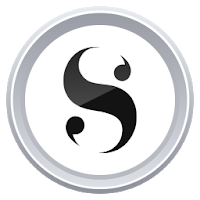
Full disclosure. I do receive a small commission if you purchase from any of my partner links on the right sidebar or in the footer.
Tweet
Published on September 13, 2018 23:30
September 12, 2018
The Chunky Method ~ By Allie Pleiter
 I was fortunate to meet Allie Pleiter at the #RWA2018 Conference in Denver this summer. I've read her book and I use her method. Frankly, and I'm not overstating this, the Chunky Method changed my writing flow.
I was fortunate to meet Allie Pleiter at the #RWA2018 Conference in Denver this summer. I've read her book and I use her method. Frankly, and I'm not overstating this, the Chunky Method changed my writing flow.
I'll share my consistent "chunk" in the comments :)
Discover Your “Chunk” To Get That Book Done
Hi, L.A. Thanks for inviting me to share my book and method on your blog.
These days publishing has become as much about productivity as about product. Writers are expected to produce books faster than ever, while also handling a multitude of marketing (if not independent publishing) tasks. How do you get those words out of your head to become the books you want to share with the world?
Here’s a powerful system for tackling this issue: The Chunky Method.
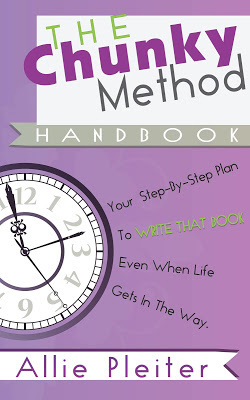 What is your Chunk?Your “Chunk” is simply how many words you write in a single sitting before you run out of creative energy. Most of us have a consistent chunk, and that can be the basis of some very effective planning. Once you give yourself a few experimental sessions and average the output, you’ll know your Chunk—and that’s half the data you need. Are you a Big Chunk writer or a Small Chunk writer?This distinction is the other half of the information you need. Based on my experience, if your chunk is 1000 words or greater, you are probably a Big Chunk writer. If it is less than that, you are likely a Small Chunk writer. Their needs are different.
What is your Chunk?Your “Chunk” is simply how many words you write in a single sitting before you run out of creative energy. Most of us have a consistent chunk, and that can be the basis of some very effective planning. Once you give yourself a few experimental sessions and average the output, you’ll know your Chunk—and that’s half the data you need. Are you a Big Chunk writer or a Small Chunk writer?This distinction is the other half of the information you need. Based on my experience, if your chunk is 1000 words or greater, you are probably a Big Chunk writer. If it is less than that, you are likely a Small Chunk writer. Their needs are different.Big Chunk writers, who must totally immerse themselves in the words to make progress, need: -a dedicated space to work. Banging out your passages at the dining room table annoys you. - a specific environment. You require silence or a certain kind of music around you when you write. A shared, messy, or a make-do office won’t do. - an extended period in which to write. You need a big block of time to find your rhythm. It’s frustrating to find a large enough span of time to write every day. - proper ergonomics. Long sessions mean you need a chair, desk, keyboard, mouse, monitor and lighting that helps your body rather than hurts it.
Small Chunk writers tend to be more adaptable…but prone to distraction. They take life, work, and writing in smaller bites and often juggle multiple projects. You can: - write anytime, anywhere. Coffee bars, park benches, libraries, airplanes—any setting works for you. - easily tune out distractions. You don’t need pleasing music (or silence)—you can tune out and crawl inside a project anywhere. - write often. Small spurts fit your writing into a busy life. A daily word count works for you, but cramming for a deadline probably won’t. - use any tools. Tablets, notepads, laptops, even index cards or cell phones —ergonomics don’t make much difference, so you’ve got lots of possibilities.
Big Chunk Writers aren’t better or more committed than Small Chunk writers, they’re just different. But both need a plan that takes their styles into account, one chunk at a time. After all, you don’t have to write the whole thing right now, just the next chunk of it. You’ll be amazed at how empowering this smaller goal can be.
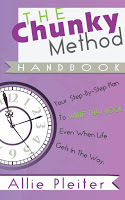 Calculate how many chunks it takes you to reach your desired word count, then plot them out on a calendar to reach your desired deadline. Any spreadsheet or even a simple calculator can help you plan, but if you’d like help formulating your Chunk and the path to a completed project, I’ve created a free Chunky Calculator you can download. Simply text CHUNKY to 22828 or click here [link listed below]. You’ll be on your way to greater productivity and a sound plan in no time.
Calculate how many chunks it takes you to reach your desired word count, then plot them out on a calendar to reach your desired deadline. Any spreadsheet or even a simple calculator can help you plan, but if you’d like help formulating your Chunk and the path to a completed project, I’ve created a free Chunky Calculator you can download. Simply text CHUNKY to 22828 or click here [link listed below]. You’ll be on your way to greater productivity and a sound plan in no time.Buy Link:
Amazon
 Bio:Bestselling author Allie Pleiter has written over 30 novels and non-fiction works, selling over 1.2 million books worldwide. Aside from teaching her popular Chunky Method of time management for writers, Allie works on as many as four books at a time. How? By fitting small “chunks” of writing into a busy life—accompanied by coffee, knitting, and lemon meringue pie.
Bio:Bestselling author Allie Pleiter has written over 30 novels and non-fiction works, selling over 1.2 million books worldwide. Aside from teaching her popular Chunky Method of time management for writers, Allie works on as many as four books at a time. How? By fitting small “chunks” of writing into a busy life—accompanied by coffee, knitting, and lemon meringue pie.She is the author of The Chunky Method Handbook: Your Step-by-Step Plan to WRITE THAT BOOK Even When Life Gets in the Way. Visit her website for more information.
Find Allie:
Instagram | Facebook | LinkedIn | Twitter | Pinterest | Goodreads
Tweet
Published on September 12, 2018 23:30
September 9, 2018
R&R: Raves and Rants For September ~ Confusing Clauses
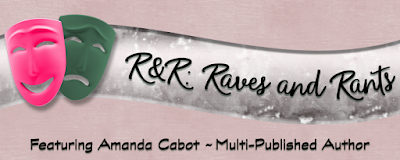
Confusing Clauses
 Last month I promised you that we’d be talking about clauses – not the ones who inhabit the North Pole – this month, and we will. Let’s start with a definition from my Merriam-Webster dictionary. According to M-W, a clause is “a group of words containing a subject and predicate and functioning as a member of a complex or compound sentence.” That’s fairly simple, isn’t it?
Last month I promised you that we’d be talking about clauses – not the ones who inhabit the North Pole – this month, and we will. Let’s start with a definition from my Merriam-Webster dictionary. According to M-W, a clause is “a group of words containing a subject and predicate and functioning as a member of a complex or compound sentence.” That’s fairly simple, isn’t it? Let’s start with an example from my current WIP. “Dorothy, who’d just finished setting glasses and silverware on each of the tables, laughed.” The words between the commas are the clause. They meet the M-W definition, because they have a subject – who – and a predicate – had just finished. Furthermore, if you remove them, you still have a complete albeit short sentence.

So what makes clauses confusing? Ambiguous antecedents. A clause refers to the noun immediately preceding it. In grammar-speak, that’s its antecedent. In my example, there’s no question that “who” refers to “Dorothy,” because “Dorothy” is the word immediately preceding “who.” But what about this sentence?
I added some chocolate powder from the cupboard, which I stirred around with a silver teaspoon.The noun immediately before the clause, its antecedent, is “the cupboard.” Did I stir a cupboard with a silver spoon? I don’t think so. One way to fix this error is to say, “I added some chocolate powder from the cupboard and stirred it with a silver teaspoon.” No ambiguity there. You’ll also note that there’s no dependent clause either.
A dependent clause, in case you were wondering, is one which cannot stand on its own. Yes, it has a subject and predicate, but it doesn’t make sense unless it’s connected to the main clause. In this case “which I stirred around with a silver teaspoon” is the dependent clause.
Let’s try another one.
Susan gripped the paperwork for the florist that she’d come to retrieve.Did Susan come to retrieve the florist? I don’t think so. Why not simply say, “Susan gripped the florist’s paperwork that she’d come to retrieve”?
The errors continue, and sadly all of these are ones I’ve found in published works.
An idea bubbled at the back of his mind that he was reluctant to voice.Was he reluctant to voice his mind? Not likely. This is another sentence that would benefit from restructuring. In this case, I’d recommend eliminating the clause and saying, “He was reluctant to voice the idea that bubbled at the back of his mind.”
By now, you’ve gotten the idea that you need to be careful – very careful – about avoiding ambiguous antecedents, so we’ll end with one final example.
He had singlehandedly driven the greedy vultures from the temple courtyard that preyed upon the worshippers who gathered there.How would you correct that sentence? Feel free to leave your answer as a comment. L.A. loves comments, and so do I.
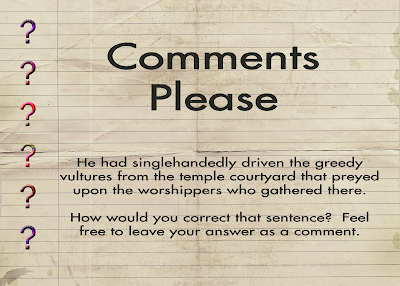
You may have noticed that the title of this column is “Raves and Rants,” but so far we’ve only had rants. As a change of pace, next month I’ll rave about things I found done well. See you then!
~Amanda
 A lifetime of reading and writing, not to mention a host of teachers who believed that good grammar was one of the essentials of life, have given Amanda Cabot such firm opinions about the printed word that I asked her to share some with us in her Raves and Rants posts. Although her working career was in Information Technology, Amanda achieved her dream of selling her first novel before her thirtieth birthday and is now the author of more than thirty novels as well as a number of books and articles for Information Technology professionals.
A lifetime of reading and writing, not to mention a host of teachers who believed that good grammar was one of the essentials of life, have given Amanda Cabot such firm opinions about the printed word that I asked her to share some with us in her Raves and Rants posts. Although her working career was in Information Technology, Amanda achieved her dream of selling her first novel before her thirtieth birthday and is now the author of more than thirty novels as well as a number of books and articles for Information Technology professionals. Her most recent release is A Borrowed Dream, the second of the Cimarron Creek trilogy.

Find all of Amanda's books, newsletter info and social media links here.
Tweet
Published on September 09, 2018 23:30
September 4, 2018
DesignCuts Latest Bundle ~ Filled With An Amazing Assortment of Creative Goodies

Wow, this bundle is full of amazing and different elements. I love bundles when they're so assorted as this one is. $1284 worth of amazing products WITH COMMERCIAL LICENSES for ONLY $29. Check it out by clicking below and scrolling through all the amazing artists.
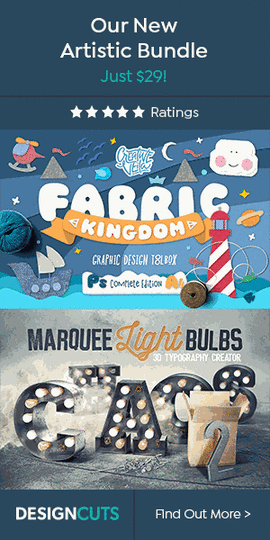
Enjoy pouring through it. I sure did!!~LATweet
Published on September 04, 2018 14:39
August 30, 2018
DesignCuts ~ Colossal Mockup Templates Bundle &Tutorial!!

Hi Guys, we all need knockout biz cards, and this week DesginCuts shows us how to make one with some freebies as well. DON'T forget to check out the amazing bundle that is only available until Tuesday 4th September 2018 at 3pm UK time. (Buy it before Monday evening)Take it away DesignCuts gurus.
We hope that you're having a creative week!
Today, we wanted to show you some inspiring ways to work with mockups. In this tutorial, we will be showing you how to design a professional looking logo for a Hawaiian Surf Club in Illustrator. Once we develop our logo we will be applying it to a realistic business card mockup over in Photoshop.
To access the business card mockup by Mockup Cloud used in this tutorial, please visit The Colossal Mockup Templates Bundle and look for the 'Share this Bundle' option situated under the grid image. All you need to do is share the bundle using one of the links provided in order to get your free download link! Please note that this offer is only available until Tuesday 4th September 2018 at 3pm UK time.
You can also enjoy a handy video version of this lesson, as we walk you carefully through every step.
Here's a look at what you'll be creating:
Follow along with this tutorial: Download the freebie filesTo access the business card mockup by Mockup Cloud used in this tutorial, please visit The Colossal Mockup Templates Bundle and look for the ‘Share this Bundle’ option situated under the grid image. All you need to do is share the bundle using one of the links provided in order to get your free download link! Please note that this offer is only available until Tuesday 4th September 2018 at 3pm UK time.

Hope you all have a happy and productive Labor Day weekend and don't forget to play with some DesignCuts bundles and videos. ~L.A.
Tweet
Published on August 30, 2018 11:56
August 19, 2018
Prism Book Tour ~ Queen of Iron and Blood by Melissa Wright
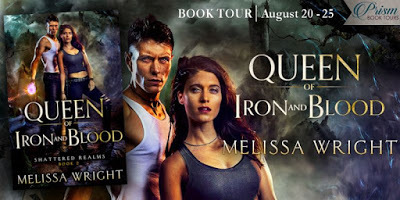 On Tour with Prism Book Tours
On Tour with Prism Book Tours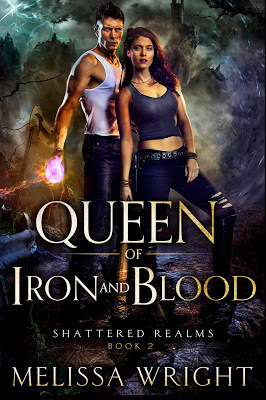 Queen of Iron and Blood
(Shattered Realms #2)By Melissa WrightYA, NA Urban Fantasy, SciFiebook, 148 PagesAugust 20th 2018
Queen of Iron and Blood
(Shattered Realms #2)By Melissa WrightYA, NA Urban Fantasy, SciFiebook, 148 PagesAugust 20th 2018The storm was only the beginning…
Mackenzie Scott is trapped in another realm, but that’s the least of her problems. Magic runs through her veins, and even now she can feel herself changing. She’s managed to help her brother, but in exchange, she’s turning into one of them. Worse, Mackenzie’s not just a monster. She’s their queen.
Hunter had one job: open the gateway between worlds to keep his realm alive. He hadn’t counted on betrayal. He hadn’t counted on being saved by a human girl. And he’d never guessed he couldn’t trust his own king. Now he’s trapped in a world to which he can never truly belong.
Separated by realms, Mackenzie and Hunter must save the other’s world. But the divide isn’t the only thing working against them. Beasts and men fight a dangerous battle that pits Hunter and Mackenzie against those they’re trying to protect.
And the clock is ticking.
Goodreads│Amazon│ Barnes & Noble │Kobo│iBooks
Other Books in the Series
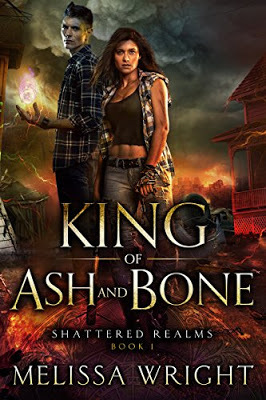 King of Ash and Bone
(Shattered Realms #1)By Melissa WrightYA, NA Urban Fantasy, SciFiPaperback & ebook, 216 PagesFebruary 2nd 2015
King of Ash and Bone
(Shattered Realms #1)By Melissa WrightYA, NA Urban Fantasy, SciFiPaperback & ebook, 216 PagesFebruary 2nd 2015When flying monsters break through the veil into her world, Mackenzie Scott has nothing left to lose. Her brother has been taken, her future has vanished, and all that remains is a desperate need for revenge. After discovering the breach the creatures used as a gateway, Mackenzie devises a plan to stop them, whatever the cost.
When she finds an injured stranger in the street, he just might be the key she needs to succeed. What Mackenzie doesn't know is that this stranger isn't the helpless boy he appears to be. He's one of the monsters. And he's got plans of his own.
Thrown into a dying city in another realm, Mackenzie is powerless to get back. With the gateway closing, time is not on her side. But the stranger is, and if they can escape execution, this girl and her monster might be able to save both their worlds.
Grab an ebook of the first book in the series for FREE!
Goodreads│Amazon│ Barnes & Noble │Kobo│iBooks
About the Author
Melissa Wright is the author of the Frey Saga, Descendants Series, and Shattered Realms Series. She is currently working on the next book, but when not writing can be found collecting the things she loves at Goodreads and Pinterest. Contact her through the web at www.melissa-wright.com .
Website│Blog│Goodreads│Twitter│Pinterest│Instagram│BookBub
ExcerptHannah pulled the gun up to her shoulder, leaving a good ten feet between her and that glass. She’d never wanted to join the army. She never would have.Now she didn’t have a choice. The Breach had made her. That was what they’d called it, as if these creatures had broken a contract, knocked a hole in a wall. Hannah had seen the chaos. Breach was not a strong enough word. When the monsters had fallen from the sky, they had wreaked havoc. Trees had been uprooted, buildings razed, people flayed open in the streets.Hannah had watched the monsters as they’d toyed with her neighbors; she’d seen them up close. They’d not Marked her, or seized her, or killed her. But they’d taken her choice.Now, there was nothing to do but this. Nothing but to save herself and the people who were left.
Tour ScheduleAugust 20th: Launch It's All About the Romance
SilverWoodSketches
An Indie Adventure
Mythical Books
August 21st:
Declarations of a Fangirl
My Life, Loves and Passion
Letters from Annie (Douglass) Lima
August 22nd:
Andi's Young Adult Books
Wishful Endings
Angel's Guilty Pleasures
August 23rd:
Reading On The Edge
Getting Your Read On
Colorimetry
August 24th:
Stacking My Book Shelves!
Nicole's Book Musings
August 25th:
Grand Finale
Tour Giveaway
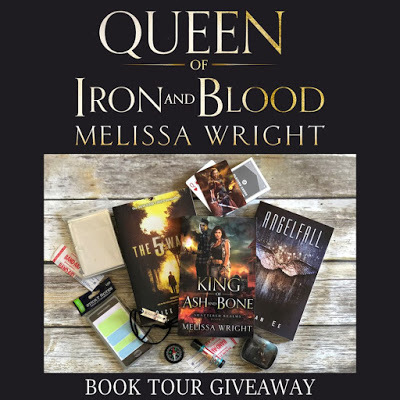
1 winner will receive an awesome prize pack with "survival" gear: print copies of The 5th Wave by Rick Yancey, Angelfall by Susan Ee, and King of Ash and Bone by Melissa Wright, plus Be Your Own Hero bracelet, lip balm, compass, playing cards, emergency blanket, and other fun stuff
US only
Ends August 29th
a Rafflecopter giveaway
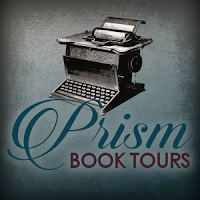 Tweet
Tweet
Published on August 19, 2018 23:30
August 17, 2018
DesignCuts New Bundle and Tutorial ~ The Designer's Essential Font Selection

Today I'm bringing you a fabulous font bundle and its tutorial. You'll need to act quickly as it expires soon, like Monday night if you want to be sure at snag it, Tuesday morning if you're a risk taker :)
I promise in the future since the bundles are so awesome, but only available for two weeks, I post the bundle, then later as the tutorial is available, I'll post it.


In this tutorial, The Designer’s Essential Font Selection from Design Cuts. You will be shown some very handy and useful Photoshop tricks along the way, so if you are all ready to begin then fire up Photoshop and prepare for the storm!
You'll see how to design a stormy concert poster in Photoshop. To do this we will be using the Vivaldi typeface from URW Type Foundry along with some free resources that you can use to follow along. This typeface is a special giveaway that you can get simply by sharingHAVE YOU SEEN OUR YOUTUBE CHANNEL?Watch the video tutorial below and subscribe to our YouTube channel for regular updates direct to your inbox.
Here’s a look at what we’ll be creating:
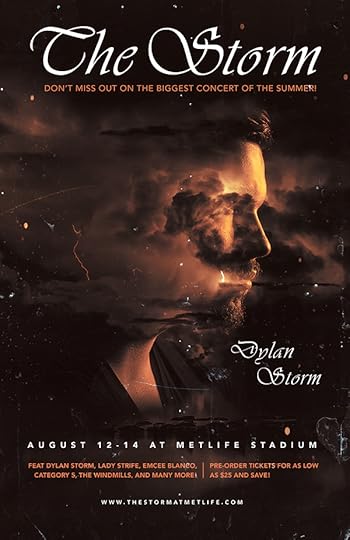 To access the Vivaldi typeface from URW Type Foundry giveaway used in this tutorial, please visit The Designer’s Essential Font Selection and look for the ‘Share this Bundle’ option situated under the grid image. All you need to do is share the bundle using one of the links provided in order to get your free download link! Please note that this offer is only available until Tuesday 21st August 2018 at 3pm UK time.
To access the Vivaldi typeface from URW Type Foundry giveaway used in this tutorial, please visit The Designer’s Essential Font Selection and look for the ‘Share this Bundle’ option situated under the grid image. All you need to do is share the bundle using one of the links provided in order to get your free download link! Please note that this offer is only available until Tuesday 21st August 2018 at 3pm UK time.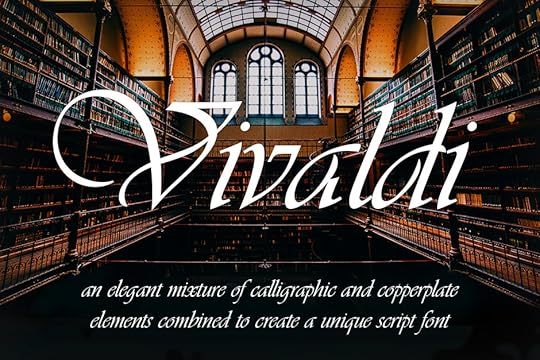
Tweet
Published on August 17, 2018 13:36
August 14, 2018
Screenwriter Robert Gosnell ~ The Ten-Percenters
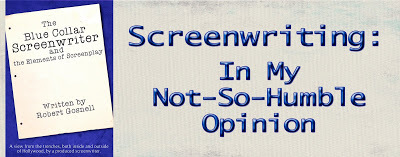 It's always a pleasure to bring you a post from my mentor, a multi-produced screenwriter, and fabulous teacher/writer. And yes, he has a book out about screenwriting that Hollywood is taking notice of--see below.
It's always a pleasure to bring you a post from my mentor, a multi-produced screenwriter, and fabulous teacher/writer. And yes, he has a book out about screenwriting that Hollywood is taking notice of--see below.
The Ten-Percenters
Hollywood agent: "Hello," he lied.
As the above joke illustrates, agents are often the subject of ridicule and scorn in Hollywood. Producers and studios see agents as bloodsuckers, who try to drain every penny and perk they can from them. Writers use them as excuses for why they aren't getting work.
The reality is that you are in charge of your career. An agent will work for you only if they see you working for yourself. They get ten percent of your script fee because they only do ten percent of the work. If you want them to do a good sales job, you must give them a good product.
Acquiring an agent without living and working in Hollywood is an uphill climb. They want to be able to shop you for assignments and rewrite opportunities and set up "get to know you" meetings. None of that can happen when you're a thousand miles away.
It is possible to change their minds, though, and, you already know how, don't you? Yep. The right script. Bowl them over with the material, and all things are possible.
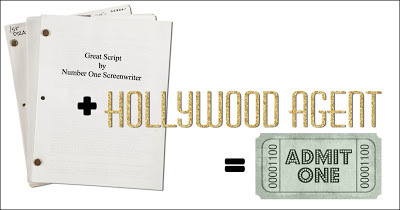
Agents can be invaluable to you, if for no other reason than to release you from the burden of business requirements that you can't, and shouldn't have to deal with. It may be a profession that is looked down upon, but it's a profession screenwriters rely on. They get bad-mouthed because part of their job is to be the bad guys when they negotiate on your behalf.
I once had a producer I was working with say to me, "Man, your agent is tough." He was right. My agent could be tough. Better him than me.
The truth is, you want a bad guy in the room, hammering out your deal, and you want him to be good.
~Robert
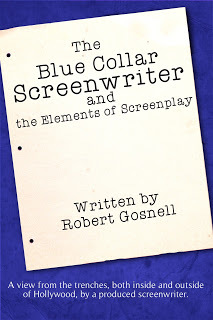 "The Blue Collar Screenwriter and The Elements of Screenplay"
is currently available at:
"The Blue Collar Screenwriter and The Elements of Screenplay"
is currently available at:Amazon digital and paperbackCreateSpace
Barnes & Noble
SmashwordsFind Robert at:
Website (with information on classes)
BIO: A professional screenwriter for more than thirty years, Robert Gosnell has produced credits in feature films, network television, syndicated television, basic cable and pay cable, and is a member of the Writers Guild of America, West and the Writers Guild of Canada.
 Robert began his career writing situation comedy as a staff writer for the ABC series
Baby Makes Five
. As a freelance writer, he wrote episodes for
Too Close for Comfort
and the TBS comedies
Safe at Home
and
Rocky Road
. In cable, he has scripted numerous projects for the Disney Channel, including Just Perfect, a Disney Channel movie featuring Jennie Garth. In 1998, he wrote the Showtime original movie,
Escape from Wildcat Canyon
, which starred Dennis Weaver and won the national "Parents Choice Award." Robert's feature credits include the Chuck Norris/Louis Gosset Jr. film
Firewalker
, an uncredited rewrite on the motion picture
Number One With A Bullet
starring Robert Carradine and Billy Dee Williams, and the sale of his original screenplay
Kick And Kick Back
to Cannon Films. Robert was also selected as a judge for the 1990 Cable Ace Awards, in the Comedy Special category.
Robert began his career writing situation comedy as a staff writer for the ABC series
Baby Makes Five
. As a freelance writer, he wrote episodes for
Too Close for Comfort
and the TBS comedies
Safe at Home
and
Rocky Road
. In cable, he has scripted numerous projects for the Disney Channel, including Just Perfect, a Disney Channel movie featuring Jennie Garth. In 1998, he wrote the Showtime original movie,
Escape from Wildcat Canyon
, which starred Dennis Weaver and won the national "Parents Choice Award." Robert's feature credits include the Chuck Norris/Louis Gosset Jr. film
Firewalker
, an uncredited rewrite on the motion picture
Number One With A Bullet
starring Robert Carradine and Billy Dee Williams, and the sale of his original screenplay
Kick And Kick Back
to Cannon Films. Robert was also selected as a judge for the 1990 Cable Ace Awards, in the Comedy Special category.In 1990, Robert left Hollywood for Denver, where he became active in the local independent film community. His screenplay Tiger Street was produced by the Pagoda Group of Denver and premiered on Showtime Extreme in August of 2003. In 1999, Denver’s Inferno Films produced the action film Dragon and the Hawk from his script. In 2001, Robert co-wrote the screenplay for the independent feature Siren for Las Vegas company Stage Left Productions. His feature script Juncture was produced by Front Range Films in March of 2006.
Robert is a principal member of the Denver production company "Conspiracy Films." He is frequently an invited speaker for local writers organizations, served on the faculty of the Rocky Mountain Fiction Writers Conference in 2002, and in 2007 was chosen to participate as a panelist for the Aspen Film Festival Short Screenplay Contest. Robert regularly presents his screenwriting class "The Elements of Screenplay," along with advanced classes and workshops, in the Denver area.
Additionally, he is a frequent contributor to this blog.
Tweet
Published on August 14, 2018 23:30
August 12, 2018
R & R ~ Raves & Rants For August, The Troublesome Twos
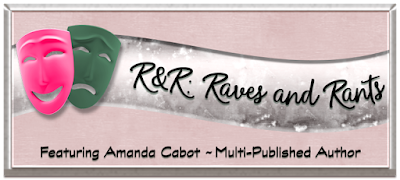
The Troublesome Twos
I need to start with a confession. Despite the title, this post is not going to discuss the number two. Instead, we’re going to explore the various uses of the word “to” and its sibling “too.” Although I’ve seen errors, particularly the misuse of “into” and “in to,” I hadn’t realized that there was confusion about simple “to” versus “too” until another writer mentioned that her critique group questioned her use of both words.
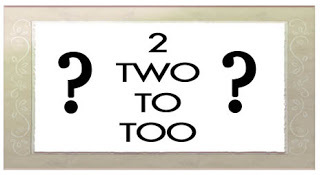
Let’s start by looking at a paragraph where I’ve used both words multiple times but for different purposes.
It was ten to six on my trip into Manhattan to visit a museum when I ran into a friend standing next to the doorway of a famous restaurant. He asked me to come in to sit at his table and pointed to the single red rose in the center of the table. “Don’t you think that’s a little too much of a cliché? Maybe I should ask for a white rose too. Just to make it more interesting.”How many instances did you find for each of these “to” functions:
Indicate direction or positionIndicate position in timeCreate an infinitiveMy counts are two, one, and four. And that’s only scratching the surface. If you look at your dictionary, you’ll discover there are numerous other ways “to” is used.
What it’s not used for is to indicate excess or as a replacement for the word “also.” That’s where “too” comes into play. If you reread my sample paragraph, you’ll see that the first time I used “too” was to indicate excess, the second instead of “also.”

Easy, right?
Although it ought to be just as simple, there seems to be confusion about when to use “into” rather than “in to.” “Into” is a preposition, and prepositions need to be followed by nouns. That’s why I wrote “into Manhattan” and “into a friend” in my sample paragraph.
“In to” is very different. In this case, “to” serves the function of creating an infinitive, which means that it must be followed by a verb, while “in” can be considered shorthand for “inside” or “indoors.” Here’s an example: I inadvertently bumped into the door when I came in to turn on the oven.
Clear? I hope so. I also hope you’ll come back next month. We’ll be talking about clauses then, and, no, I don’t mean Santa and Mrs.
~Amanda
 A lifetime of reading and writing, not to mention a host of teachers who believed that good grammar was one of the essentials of life, have given Amanda Cabot such firm opinions about the printed word that I asked her to share some with us in her Raves and Rants posts. Although her working career was in Information Technology, Amanda achieved her dream of selling her first novel before her thirtieth birthday and is now the author of more than thirty novels as well as a number of books and articles for Information Technology professionals.
A lifetime of reading and writing, not to mention a host of teachers who believed that good grammar was one of the essentials of life, have given Amanda Cabot such firm opinions about the printed word that I asked her to share some with us in her Raves and Rants posts. Although her working career was in Information Technology, Amanda achieved her dream of selling her first novel before her thirtieth birthday and is now the author of more than thirty novels as well as a number of books and articles for Information Technology professionals. Her most recent release is A Borrowed Dream, the second of the Cimarron Creek trilogy.

Find all of Amanda's books, newsletter info and social media links here.
Tweet
Published on August 12, 2018 23:30



